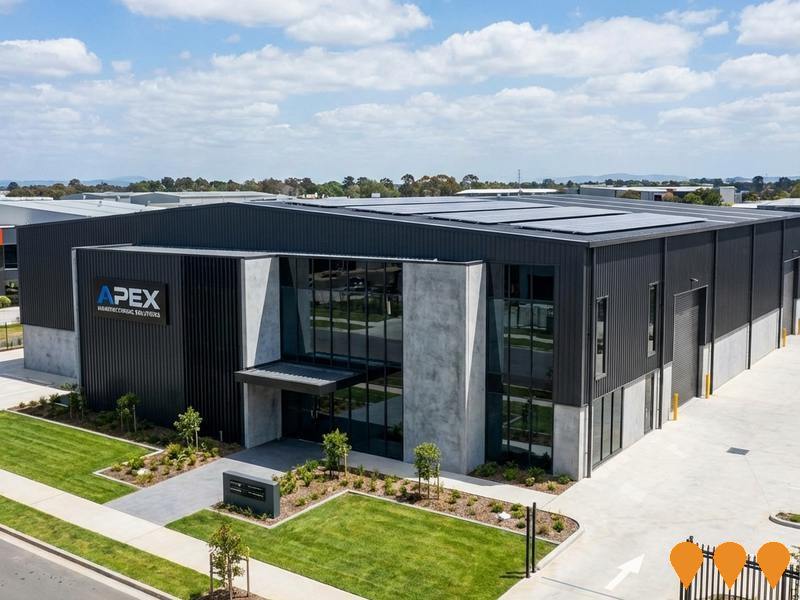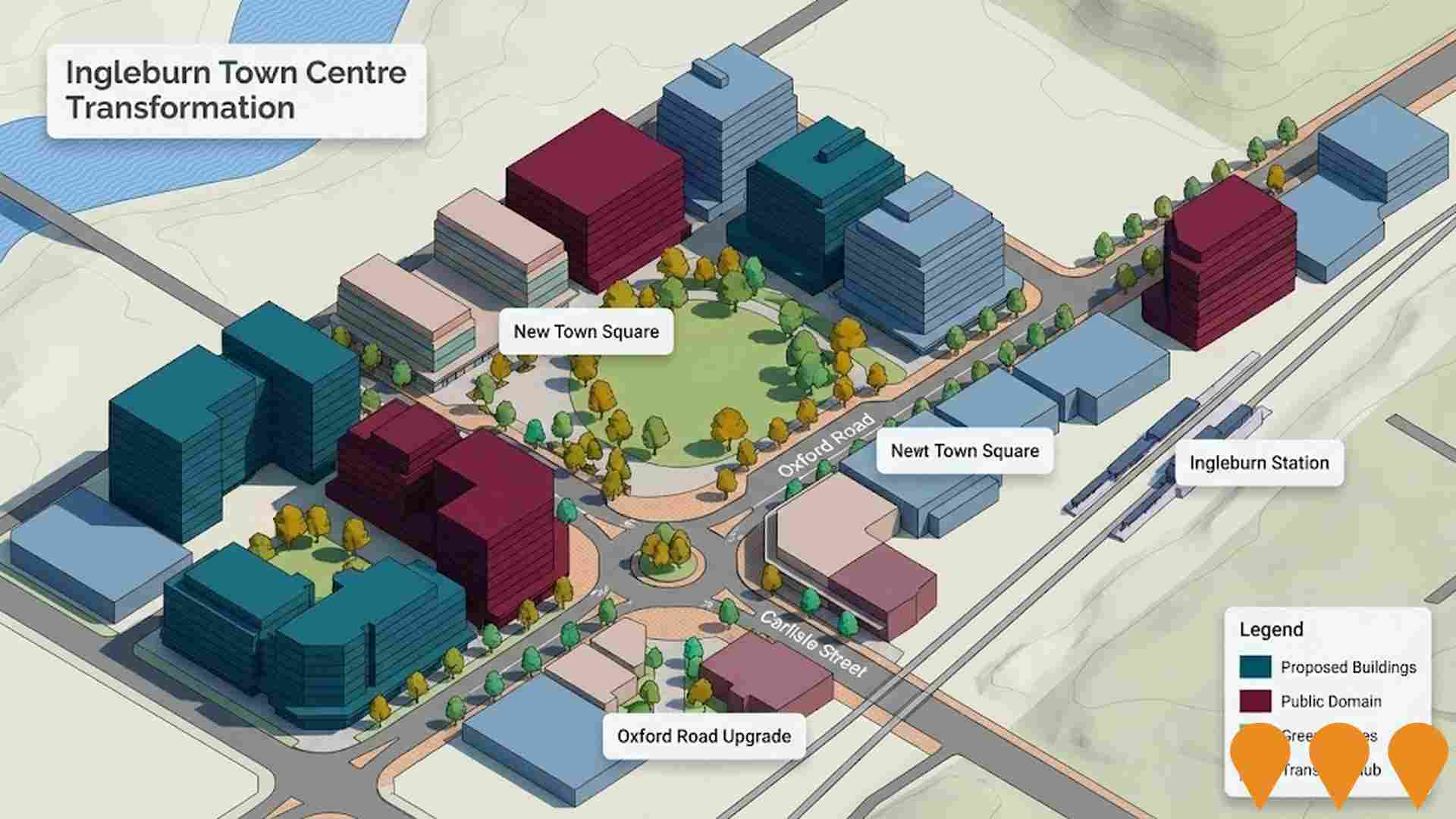Chart Color Schemes
est. as @ -- *
ABS ERP | -- people | --
2021 Census | -- people
Sales Activity
Curious about local property values? Filter the chart to assess the volume and appreciation (including resales) trends and regional comparisons, or scroll to the map below view this information at an individual property level.
Find a Recent Sale
Sales Detail
Population
Population growth drivers in Ingleburn are strong compared to national averages based on AreaSearch's ranking of recent, and medium to long-term trends
Ingleburn's population, as per AreaSearch's analysis, stood at approximately 17,885 by November 2025. This figure indicates a rise of 1,165 individuals, representing a 7.0% increase since the 2021 Census, which reported a population of 16,720. The change is inferred from the estimated resident population of 17,184 in June 2024 and an additional 491 validated new addresses since the Census date. This results in a population density ratio of 1,266 persons per square kilometer, exceeding the average across national locations assessed by AreaSearch. Ingleburn's growth rate of 7.0% since the 2021 census surpassed the state's growth rate of 6.7%, positioning it as a regional growth leader. Overseas migration contributed approximately 65.7% of overall population gains during recent periods, driving this growth.
AreaSearch employs ABS/Geoscience Australia projections for each SA2 area, released in 2024 with a base year of 2022. For areas not covered by this data, AreaSearch uses the NSW State Government's SA2 level projections, released in 2022 with a base year of 2021. Growth rates by age group from these aggregations are applied to all areas for years 2032 to 2041. Looking ahead, an above-median population growth is projected for the area, with an expected increase of 3,315 persons by 2041 based on the latest population numbers, representing a total gain of 14.5% over the 17-year period.
Frequently Asked Questions - Population
Development
Residential development activity is lower than average in Ingleburn according to AreaSearch's national comparison of local real estate markets
Ingleburn has averaged approximately 54 new dwelling approvals annually over the past five financial years, totalling 273 homes. As of FY-26 so far, 50 approvals have been recorded. The average population growth per year for each dwelling built in Ingleburn between FY-21 and FY-25 has been around 0.1 people. This pace of new supply meets or exceeds demand, providing ample buyer choice and room for future population growth beyond current projections.
New properties are constructed at an average expected cost of $262,000, which is below regional norms, offering more affordable housing options. In FY-26, there have been $11.4 million in commercial approvals, indicating moderate levels of commercial development. Compared to Greater Sydney, Ingleburn has markedly lower building activity, at 51.0% below the regional average per person. This limited new supply generally supports stronger demand and values for established properties, although construction activity has recently intensified. Nationally, this level is also below average, suggesting possible planning constraints. Recent construction comprises 49.0% detached dwellings and 51.0% townhouses or apartments, a shift from the current housing mix of 69.0% houses. This focus on higher-density living creates more affordable entry points for downsizers, investors, and first-home buyers.
With around 272 people per dwelling approval, Ingleburn indicates a developing market. By 2041, Ingleburn is projected to grow by approximately 2,597 residents. Development is keeping pace with projected growth, but buyers may face increasing competition as the population expands.
Frequently Asked Questions - Development
Infrastructure
Ingleburn has very high levels of nearby infrastructure activity, ranking in the top 20% nationally
Changes to local infrastructure significantly influence an area's performance. AreaSearch has identified 46 projects potentially impacting the area. Notable ones include Palmer Street Mixed-Use Development, Caledonia Estate, Ingleburn Town Centre Transformation Project, and Ingleburn Precinct Plan. Below is a list detailing those likely most relevant.
Professional plan users can use the search below to filter and access additional projects.
INFRASTRUCTURE SEARCH
 Denotes AI-based impression for illustrative purposes only, not to be taken as definitive under any circumstances. Please follow links and conduct other investigations from the project's source for actual imagery. Developers and project owners wishing us to use original imagery please Contact Us and we will do so.
Denotes AI-based impression for illustrative purposes only, not to be taken as definitive under any circumstances. Please follow links and conduct other investigations from the project's source for actual imagery. Developers and project owners wishing us to use original imagery please Contact Us and we will do so.
Frequently Asked Questions - Infrastructure
Ingleburn Town Centre Transformation Project
This project will deliver a transformational Town Centre beautification and cultural art infrastructure program, including lighting, safety, greening, event readiness, public art, traffic management, and amenity improvements in the Ingleburn Town Centre, in partnership with the Ingleburn Chamber of Commerce. It aims to create streets and spaces that foster civic participation, increase visitation, and improve the viability and sustainability of the Town Centre.

Ingleburn Precinct Plan
The Ingleburn Precinct Plan aims to create a vibrant town centre with a strong village character, accommodating up to 3200 new homes in 4-8 storey buildings within 800m of the train station, expanded retail and residential areas. The plans have been finalised, and rezoning is now possible through planning proposals to Campbelltown City Council.
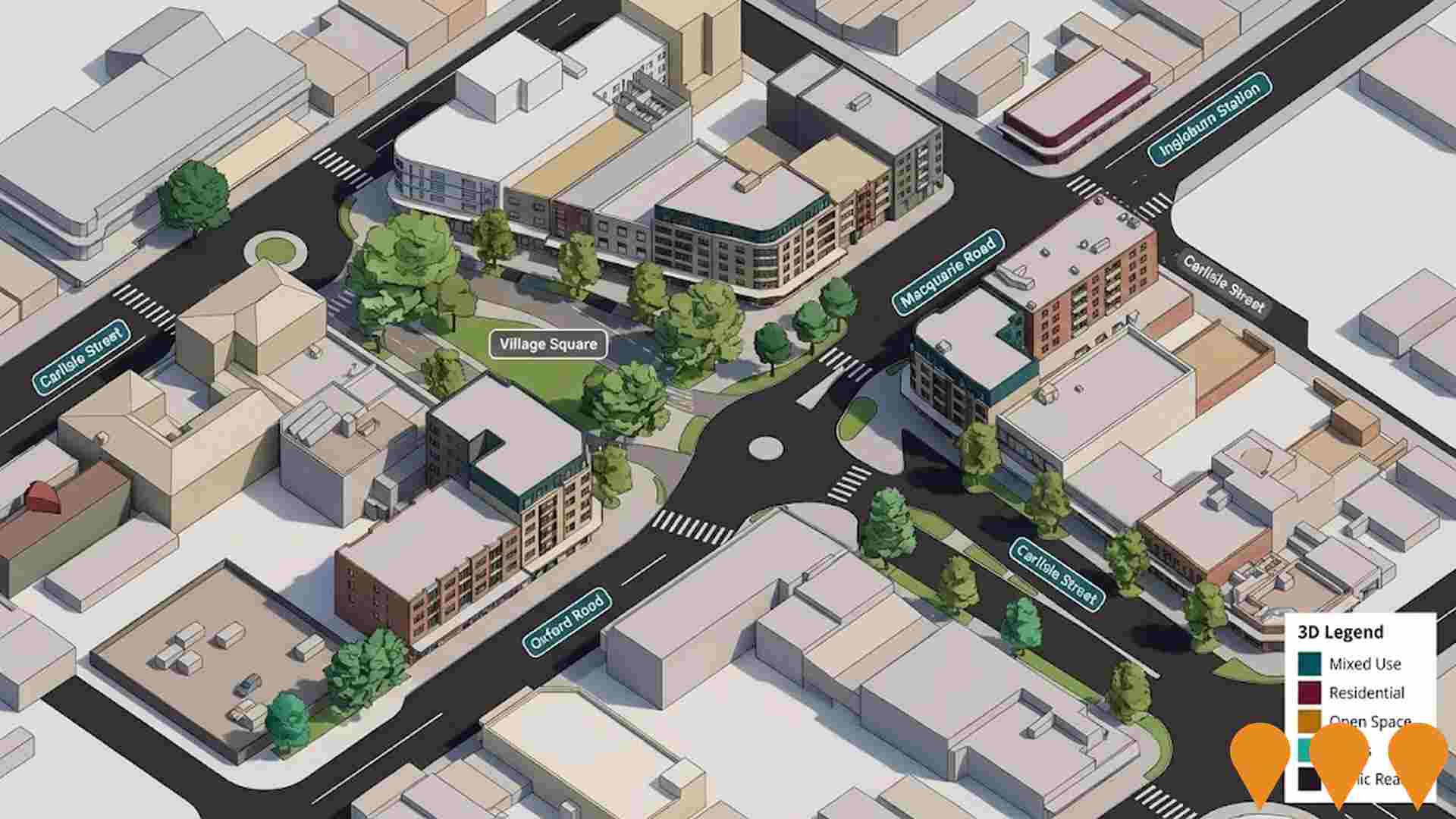
Macquarie Links Estate Development
High-security gated residential estate with championship golf course developed by Monarch Investments Group. Features 14 stages of housing, 3 stages of villas, 1 apartment strata, Community Centre, Sports Complex, and Robin Nelson-designed golf course. Development completed in 2017.
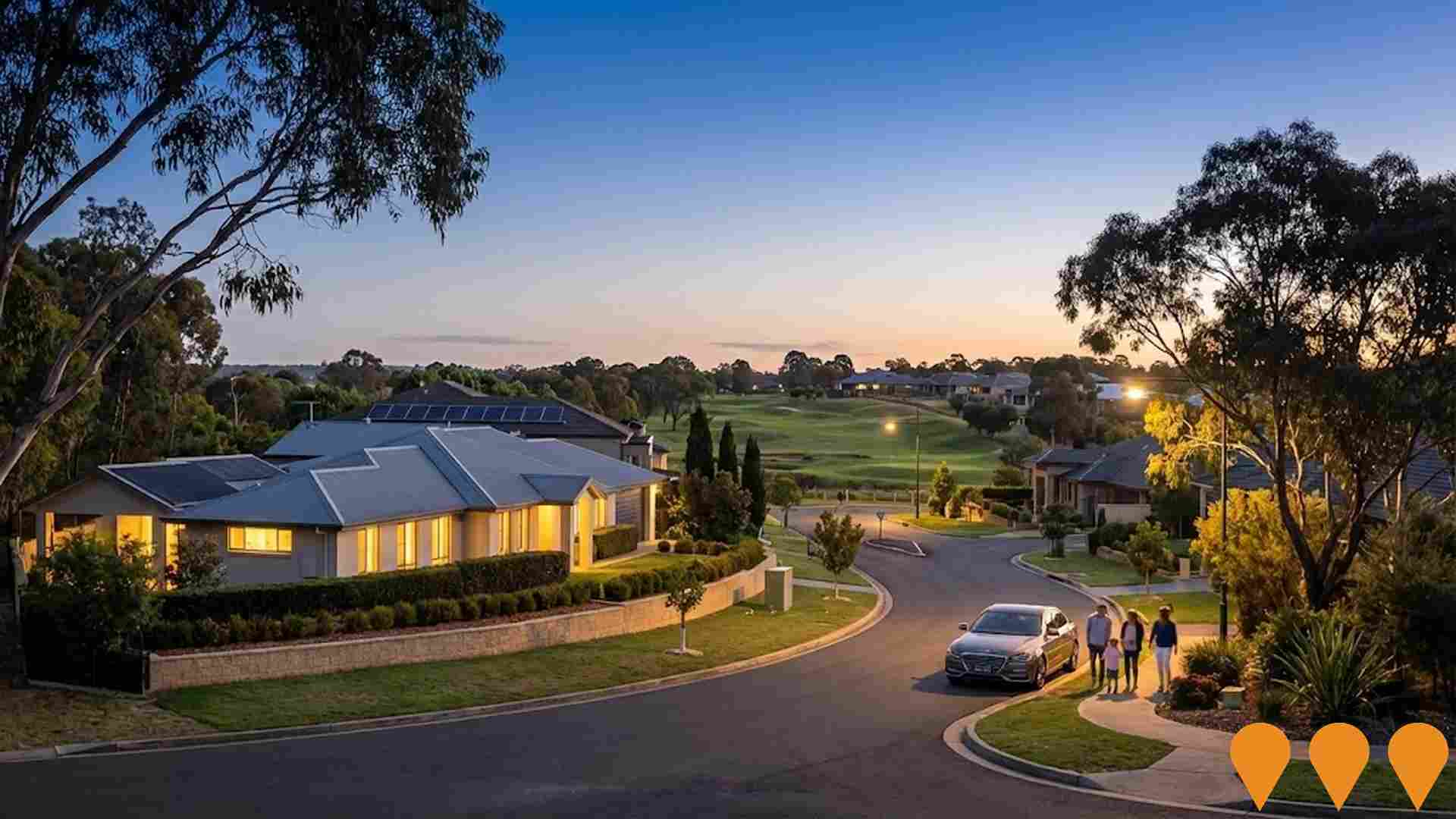
Macquarie Fields Station Upgrade
NSW Government accessibility and safety upgrade at Macquarie Fields Station. Features new passenger footbridge with lifts, upgraded station forecourt, accessible parking spaces, kiss and ride zones, enhanced pedestrian connections, new accessible toilets, improved lighting and CCTV. Construction by Arenco.

Palmer Street Mixed-Use Development
A 10-storey mixed-use development featuring 102 residential apartments (including 17 affordable housing units) and a ground-floor childcare centre. The building will rise to 33.8 metres with 138 parking spaces across three basement levels and 25 bicycle spaces. Located 650 metres from Ingleburn Railway Station. Developed by A&M Group 1 Pty Ltd.
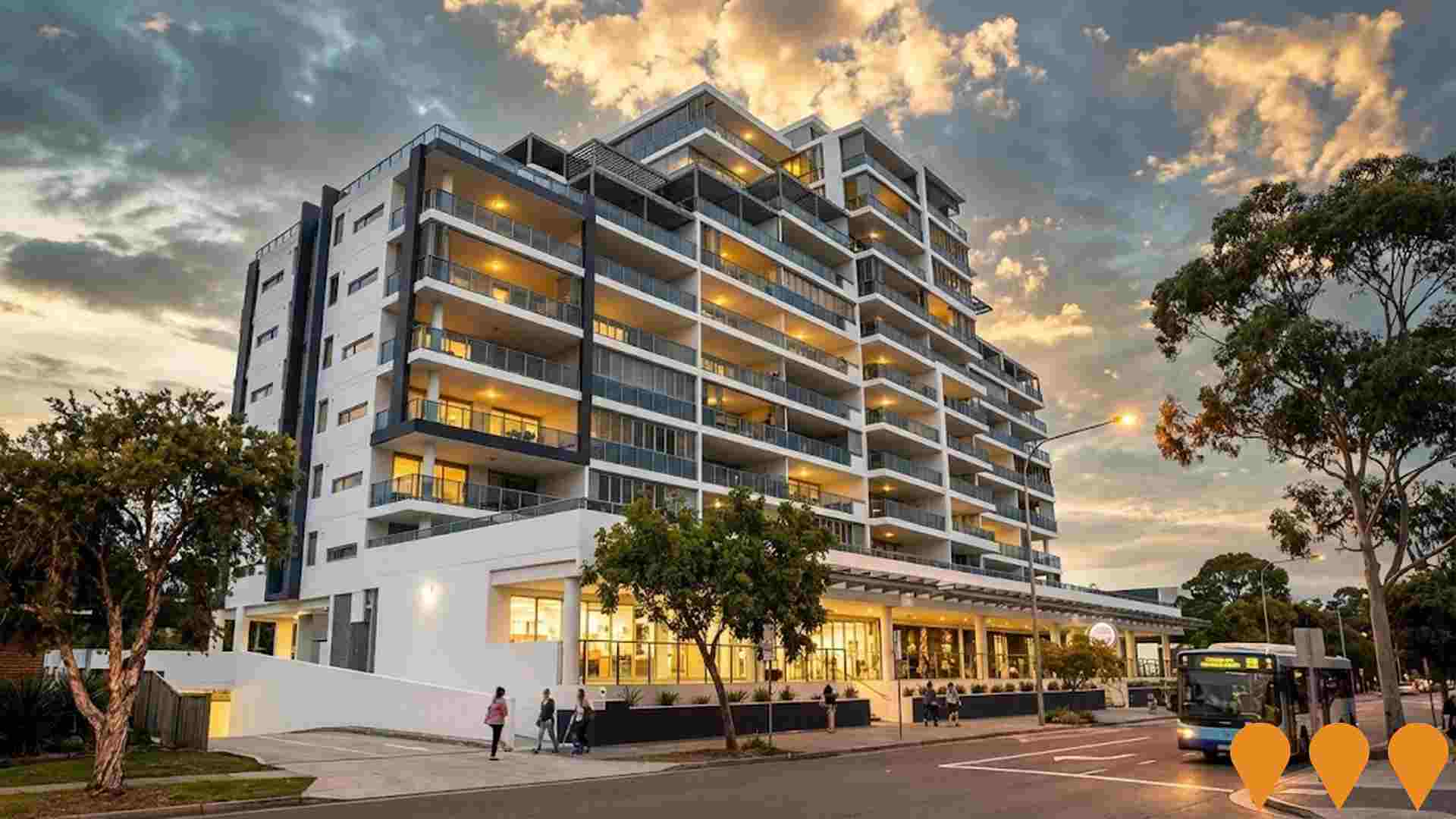
Shrike Place Childcare Centre
DA approved 60-place childcare development with dual street frontage, efficient design, and proximity to schools and town centres. Recent modification application submitted in June 2025 for a two-storey structure with basement parking.

Willowdale Community Precinct
A $30 million community precinct within Stockland's Willowdale estate delivering a new community centre with hall and flexible spaces, a swim school operated by Aquabliss with two pools, and a Goodstart Early Learning centre providing 121 childcare places. Construction commenced in November 2024 with opening targeted for early to mid 2026.
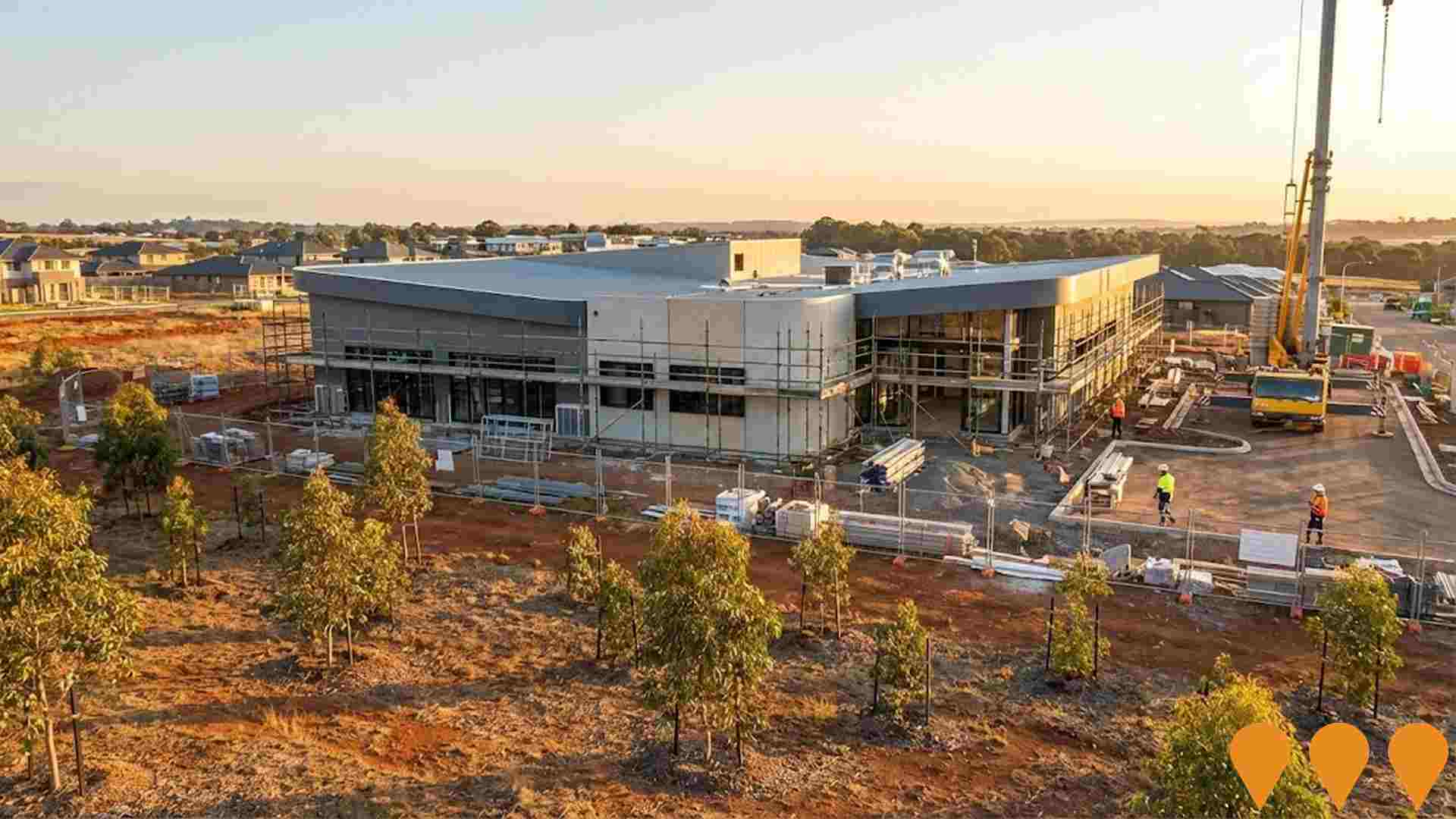
Ingleburn Road High Density Development
A landmark high density mixed-use development opportunity within the Greater Macarthur Growth Area, featuring a 3,773sqm land holding zoned R4 High Density Residential, with potential for over 100 units, benefiting from recent planning control changes for increased height and floor space ratio, located 300m from Ingleburn Train Station and 200m to Ingleburn Town Centre.

Employment
Employment conditions in Ingleburn remain below the national average according to AreaSearch analysis
Ingleburn's workforce is well-educated with diverse sector representation. As of June 2025, the unemployment rate was 5.5%.
Over the past year, employment grew by an estimated 4.8%. Ingleburn had 8,901 residents in work while its unemployment rate was 1.4% higher than Greater Sydney's rate of 4.2%. Workforce participation was lower at 57.0%, compared to Greater Sydney's 60.0%. Employment is concentrated in health care & social assistance, retail trade, and transport, postal & warehousing.
Ingleburn shows strong specialization in transport, postal & warehousing with an employment share of 1.8 times the regional level. Conversely, professional & technical has lower representation at 6.4% versus the regional average of 11.5%. The ratio of 0.7 workers per resident indicates above-normal local employment opportunities. Between June 2024 and June 2025, employment increased by 4.8%, while labour force grew by 4.9%, keeping unemployment broadly flat. Greater Sydney recorded employment growth of 2.6% and labour force growth of 2.9%, with unemployment rising by 0.3 percentage points. Jobs and Skills Australia's national employment forecasts from May 2025 project national employment to expand by 6.6% over five years and 13.7% over ten years. Applying these projections to Ingleburn's employment mix suggests local growth of approximately 6.4% over five years and 13.4% over ten years.
Frequently Asked Questions - Employment
Income
Income levels sit below national averages according to AreaSearch assessment
Ingleburn's median taxpayer income is $46,867 and average income is $55,016 based on latest postcode level ATO data aggregated by AreaSearch for financial year 2022. This is lower than national averages, with Greater Sydney having a median income of $56,994 and average income of $80,856. By September 2025, estimated median income in Ingleburn would be approximately $52,777 and average income $61,954, accounting for Wage Price Index growth of 12.61% since financial year 2022. Census data indicates household, family, and personal incomes rank modestly in Ingleburn, between the 37th to 46th percentiles. The $1,500 - 2,999 earnings band captures 35.0% of the community (6,259 individuals), similar to regional trends at 30.9%. Housing affordability pressures are severe, with only 81.8% of income remaining, ranking at the 44th percentile. The area's SEIFA income ranking places it in the 4th decile.
Frequently Asked Questions - Income
Housing
Ingleburn displays a diverse mix of dwelling types, with above-average rates of outright home ownership
Ingleburn's dwellings, as per the latest Census evaluation, consisted of 68.8% houses and 31.1% other dwellings (semi-detached, apartments, 'other' dwellings), compared to Sydney metro's 78.5% houses and 21.5% other dwellings. Home ownership in Ingleburn stood at 28.2%, with mortgaged dwellings at 38.6% and rented ones at 33.2%. The median monthly mortgage repayment was $2,000, below Sydney metro's average of $2,100. Median weekly rent in Ingleburn was $380, matching Sydney metro's figure. Nationally, Ingleburn's mortgage repayments were higher than the Australian average of $1,863, while rents exceeded the national figure of $375.
Frequently Asked Questions - Housing
Household Composition
Ingleburn has a typical household mix, with a fairly typical median household size
Family households comprise 76.8% of all households, including 40.2% couples with children, 20.9% couples without children, and 14.5% single parent families. Non-family households account for the remaining 23.2%, with lone person households at 20.6% and group households comprising 2.6% of the total. The median household size is 2.9 people, which matches the Greater Sydney average.
Frequently Asked Questions - Households
Local Schools & Education
Ingleburn shows below-average educational performance compared to national benchmarks, though pockets of achievement exist
Ingleburn's educational qualifications trail regional benchmarks, with 28.9% of residents aged 15+ holding university degrees compared to 38.0% in Greater Sydney. This gap indicates potential for educational development and skills enhancement. Bachelor degrees are the most common at 19.1%, followed by postgraduate qualifications (8.2%) and graduate diplomas (1.6%). Trade and technical skills are prominent, with 30.7% of residents aged 15+ holding vocational credentials – advanced diplomas (10.5%) and certificates (20.2%).
Educational participation is high, with 30.8% of residents currently enrolled in formal education. This includes 10.6% in primary education, 7.9% in secondary education, and 5.5% pursuing tertiary education. Ingleburn has 5 schools with a combined enrollment of 2,050 students, demonstrating typical Australian school conditions (ICSEA: 991) with balanced educational opportunities. Education provision is balanced with 3 primary and 2 secondary schools serving distinct age groups. School places per 100 residents (11.5) fall below the regional average (17.3), suggesting some students may attend schools in adjacent areas. Note: where schools show 'n/a' for enrolments, please refer to parent campus.
Frequently Asked Questions - Education
Schools Detail
Nearby Services & Amenities
Transport
Transport servicing is good compared to other areas nationally based on assessment of service frequency, route connectivity and accessibility
Ingleburn has 127 active public transport stops offering a mix of train and bus services. These stops are served by 49 unique routes, collectively facilitating 4,325 weekly passenger trips. The accessibility to these stops is rated excellent, with residents on average being located 191 meters from the nearest stop.
On average, there are 617 trips per day across all routes, which equates to approximately 34 weekly trips per individual stop.
Frequently Asked Questions - Transport
Transport Stops Detail
Health
Ingleburn's residents are healthier than average in comparison to broader Australia with prevalence of common health conditions quite low among the general population though higher than the nation's average across older, at risk cohorts
Ingleburn's health data shows a relatively positive picture with low prevalence of common conditions among its general population, although this rate is higher than the national average for older, at-risk cohorts. Only approximately 48% (~8,513 people) have private health cover, which is lower than the national average of 55.3%.
The most prevalent medical conditions are arthritis and asthma, affecting 7.5% and 7.1% of residents respectively. Conversely, 71.6% of residents report being free from medical ailments, compared to 70.3% in Greater Sydney. Ingleburn has a higher proportion of seniors aged 65 and over at 15.9% (2,838 people), compared to the 14.4% in Greater Sydney. Health outcomes among seniors require more attention than those for the broader population.
Frequently Asked Questions - Health
Cultural Diversity
Ingleburn is among the most culturally diverse areas in the country based on AreaSearch assessment of a range of language and cultural background related metrics
Ingleburn has a high level of cultural diversity, with 44.2% of its population born overseas and 44.7% speaking a language other than English at home. Christianity is the predominant religion in Ingleburn, comprising 51.1% of the population. Islam is notably overrepresented in Ingleburn compared to Greater Sydney, making up 13.4% of the population versus 12.5%.
The top three ancestry groups are Other (24.5%), Australian (17.9%), and English (16.6%). Some ethnic groups have notable divergences: Filipino is overrepresented at 4.8%, Samoan at 2.2%, and Spanish at 0.8% compared to regional percentages of 3.3%, 2.4%, and 0.7% respectively.
Frequently Asked Questions - Diversity
Age
Ingleburn's population is slightly younger than the national pattern
Ingleburn's median age is 37, matching Greater Sydney's figure of 37 and remaining close to Australia's median age of 38 years. The 55-64 age group comprises 11.9% of Ingleburn's population compared to Greater Sydney, while the 25-34 cohort makes up 13.5%. Between 2021 and present, the 75 to 84 age group has increased from 3.7% to 4.8% of the population. Conversely, the 55 to 64 age group has decreased from 13.1% to 11.9%. By 2041, demographic projections indicate significant shifts in Ingleburn's age structure. The 45-54 group is expected to grow by 51%, adding 1,082 people and reaching a total of 3,218 from the current 2,135. Meanwhile, both the 15-24 and 25-34 age groups are projected to decrease in number.

